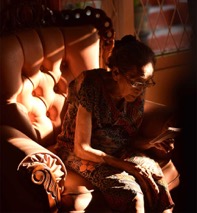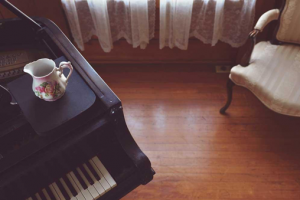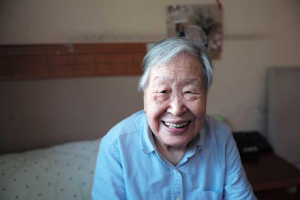 If you or someone you love has a diagnosis of dementia, you are probably feeling overwhelmed. This is not your fault. Our world is ill-equipped to support those with different cognitive and physical limitations.
If you or someone you love has a diagnosis of dementia, you are probably feeling overwhelmed. This is not your fault. Our world is ill-equipped to support those with different cognitive and physical limitations.
One of the single most important things you can do to help create a dementia-inclusive home. According to AARP’s policy book, “The physical features of a residence can be critical to a person’s ability to age in place. Unfortunately, much of the nation’s current housing stock may prove inappropriate as the population ages …accessibility features permit people to age in place rather than being forced to move to more expensive assisted living facilities or other institutional settings.”
Creating an environment that is dementia-inclusive increases safety while decreasing stress. Options to do this range from small steps to big moves, outlined below.
A Dementia-Inclusive Home Refresh
Start with an easy home refresh. The simplest option to create a dementia safe environment is to make some minor changes in your existing home.
You in Your Environment: Decreasing Fall Risk for Seniors
 Before you make any changes to your environment, start with yourself. Many of us unknowingly set ourselves up to be unsafe at home. Physical Therapist Laura Dean says, “You can have the best balance in the world and still fall… setting up your environment for success is really huge.”
Before you make any changes to your environment, start with yourself. Many of us unknowingly set ourselves up to be unsafe at home. Physical Therapist Laura Dean says, “You can have the best balance in the world and still fall… setting up your environment for success is really huge.”
Laura’s advice for avoiding falls includes:
- Get footwear that fits and is non-slip.
- Be wary of slippers and socks.
- Practice moving in different directions.
- Practice taking different sized steps.
- Practice quick reactions in a safe space because falls happen fast.
- Take a fall practice class. This helps you overcome the fear of falling, as fear can actually increase your risk of a fall.
Simplifying Your Surroundings
Simplifying your environment makes it safer for the physical and cognitive changes of dementia by doing the following:
- Remove all rugs and make flooring as even as possible.
- Remove anything that is unstable and could fall if used for support while walking.
- Learn from your loved one. Are there things they confuse for other objects? If so, remove them.
- Store anything that could be poisonous or harmful in a safe place.
- Try a capsule wardrobe to make dressing easy.
- Minimize and simplify. The less you have the less there is to worry about. The less you have, the easier the day to day and future transitions will be.
Technology for Seniors with Dementia
The landscape of technology that is helpful for people living with dementia is constantly changing. Here are some broad categories to think about:
- Usage monitoring. There are a host of sensors you can use. They can keep track of the fridge, stove and bathroom usage. This can help detect early if your loved one is not eating or bathing or doing other so-called ADLs, which are also known as activities of daily living. Note: always get consent of your loved one before adding any sort of home monitoring system. Talk with them about this early and often so you know their wishes.
- Telepresence. Figure out what way works best for you to be there when you can’t be there. Most tablets and phones have video call capabilities. There are even telepresence robots. These move around with a loved one and give the sense of being there.
- Use support services. Rideshare apps can help when driving becomes no longer safe. Food delivery apps can help with getting healthy easy to prepare food to your door.
- Smart speakers. Many people living with dementia report these have been invaluable. They can provide reminders and also answer questions with unending patience.
Home Modification
 If possible, work with someone skilled in universal design to assess your home. Do some remodeling if needed. Universal design is not clinical or stigmatizing design. It is beautiful design inspired by the frailest among us and it serves to benefit all of us.
If possible, work with someone skilled in universal design to assess your home. Do some remodeling if needed. Universal design is not clinical or stigmatizing design. It is beautiful design inspired by the frailest among us and it serves to benefit all of us.
Nichole Kain, environmental gerontologist shares, “I’m on a mission to change the way we think about homes in America. No more Peter Pan houses, building as if we will never get old.” Many towns offer free in-home safety checks. Check with your physician or local area agency on aging. Some changes they might suggest are:
- Adding motion sensor lights on the route to the bathroom.
- Making sure all walkways are wide enough for a wheelchair or walker.
- Considering an induction cooktop.
- Adding an adjustable shower head.
- Changing doorknobs to lever handles.
What is a Universally Designed Home?
The best way to optimize safety is to move into a universally designed home in a dementia-inclusive community or use these principles in your own home. There is a growing movement of options available.
One company that is working tirelessly to make this a possibility is Minka, headed by innovative geriatrician Dr. Bill Thomas. Dr. Thomas describes the importance of universally designed homes with the following, “We are all familiar with prosthetics that are designed to help people missing a limb regain full function. What has been missing in American society is the idea that the house can also be a prosthetic device. Our company, Minka, designs houses to optimize the function of people living with dementia and increase the pleasure they experience in daily life.”
Minka is currently partnered on several projects across the country, including creating dementia-inclusive communities like the “MAGIC” (Multi-Ability, multi-Generational, Inclusive Community) pilot project with the University of Southern Indiana. Dr. Thomas calls us to action saying, “To create places where people living with dementia can thrive, we must build communities that embrace people of different ages and abilities, rather than putting them in institutions just because they are frail or forgetful.”
When is Safe too Safe?
Dr. Thomas also cautions about surplus safety. Once we exit childhood and achieve adult status, we are granted the right to folly. That is the right to make decisions others see as silly, to make mistakes, to do things that are not safe and secure. This is central to human experience and growth.
Should this right be taken away because of a dementia diagnosis? No. With every decision we make to increase safety, we need to weigh the costs on dignity and self-expression. Many people living with dementia are experiencing surplus safety. In the name of keeping them safe, their rights to walk outside, choose what they want to eat, decide the schedule of their days, decide how they want to express themselves, what they want to wear and many more may be stripped away without consent.
Finding the right balance is key. Every day many of us choose to do dangerous things like driving a car or eating unhealthy food. These things are a part of the life we desire to have. For those living with dementia, quality of life and quantity of life must be balanced when making decisions around safety. The challenge and the joy is to find the right amount of safety for each individual to live the life they want until the end.
A professional Care Manager/Aging Life Care Expert (TM) can help you choose the right technology and assist you in customizing a care plan to keep your family member safe and at the same time increasing their quality of life. Give us a call and we can help you in the San Francisco Bay Area or find an Aging Life Care Manager (TM) for you any other place in the country.
When you have a complimentary home assessment, we will also do a home Alzheimer’s safety evaluation for you at the same time. Let our team of experts lighten your load and help keep your loved one healthy and safe at home.
Resources
MInka MAGIC Homes and Communities
AARP Roadmap to Liveability – Housing Workbook
How to Maintain Independence while Living with Alzheimer’s






